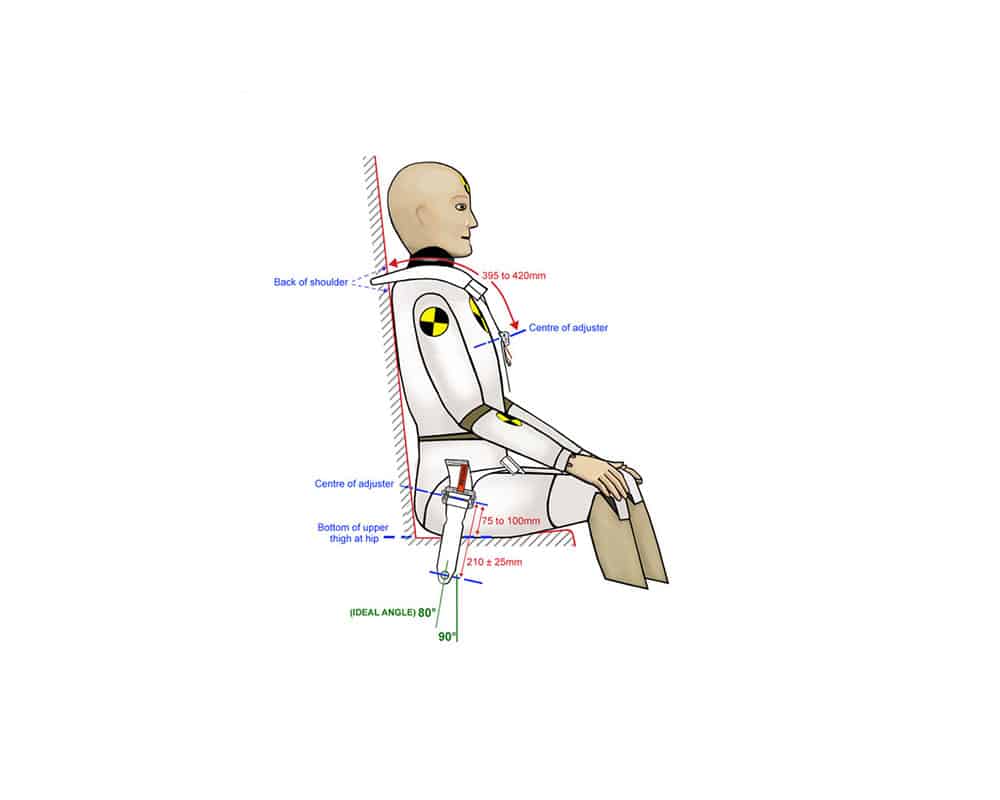Harness Installation (Pn. 270)
Fitting
LAP STRAPS - Presented adjacent to upper thigh. Webbing to pass across lap (bone structure)
SHOULDER STRAPS - Presented above the shoulder. Webbing to pass over centre of shoulder (bone structure)
ADJUSTER POSITION - Lap: 75 to 100mm from bottom of upper thigh at hip
TURN LEVER BUCKLE - Connected to the strap furthest from the exit (to help avoid damage)
FASTENING - Insert tongue into buckle: a positive 'click' indicates assembly
RELEASING - Turn the release lever: the tongue(s) will be ejected from the buckle
Users and Maintenance Instructions
USE
- The restraint is designed to be used by one person only and intended for use by occupants of adult build.
- It is important to wear the restraint on each journey.
- At all times adjust to leave no excess slackness. FIRSTLY CONNECT AND FULLY TIGHTEN THE LAP STRAP, THEN TIGHTEN SHOULDER STRAPS.
- Shoulder straps should pass across the centre of the shoulder, and lap straps across the lap.
- Avid twisting the webbing during use. Webbing must not be allowed to chafe, i.e. against sharp edges.
- When not in use store clear of doors, seat runners, etc to avoid damage.
- DO NOT MAKE ALTERATIONS/ADDITIONS TO THE RESTRAINT.
CARE
- Regularly inspect restraints and replace those not in good condition i.e.
- Restraints that have been cut, frayed, damaged or stressed through impact
- Restraints that do not adjust or fasten correctly
- After impact, the vehicle’s anchorages should also be checked.
- To clean webbing use warm soap water only. Do not use chemical cleaners, bleach or dye. Contamination with petrol, grease and acid will be detrimental.


